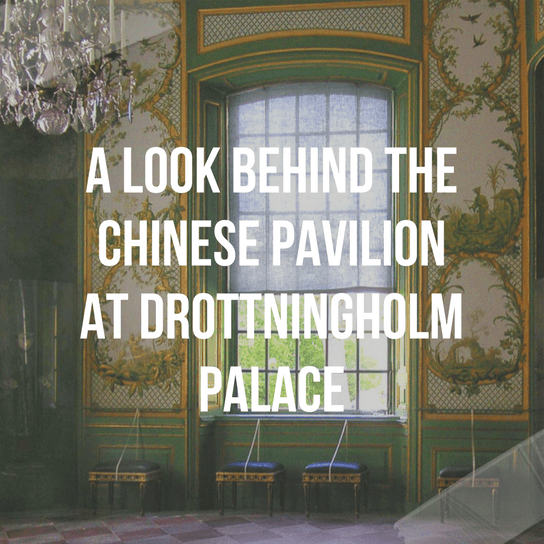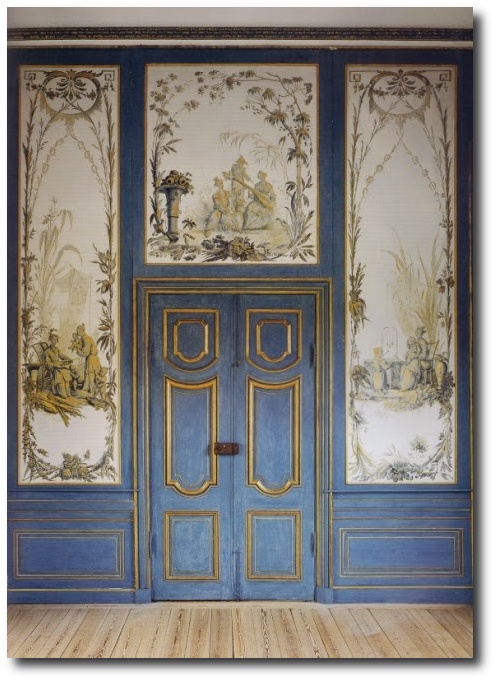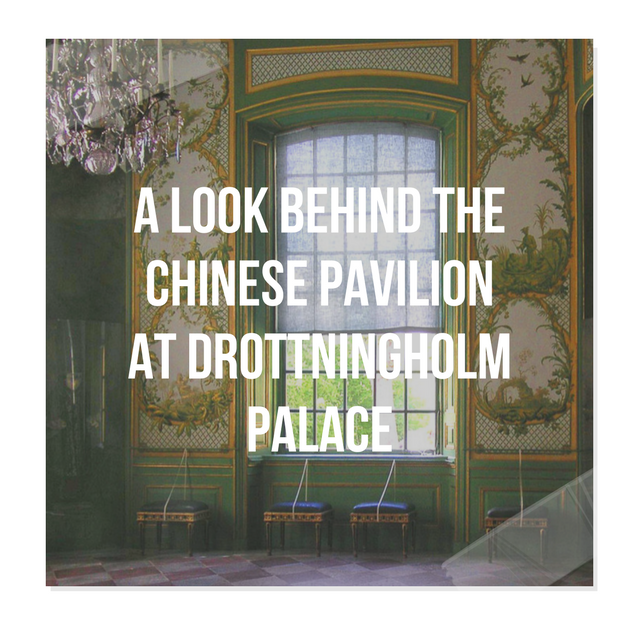
The Chinese Pavilion (In Swedish: Kina slott), is located on the grounds of the Drottningholm Palace park. The royal pavilion is one of Sweden’s Royal Palaces. The first castle building was built in 1753 and was a birthday gift to Queen Lovisa Ulrika from King Adolf Fredrik. After a few years was, however,it demolished because of decay, and in 1769 was new Chinese Pavilion finished, designed by architect Carl Fredrik Adelcrantz.
The rooms are decorated with chinese and some japanese wallpapers, wallpanels, paintings and objects. The environment of Drottningholm Palace – the palace, theatre, Chinese Pavilion and parks – is the best example of an 18th century royal palace in Sweden and is also representative for European architecture of that period.
Check out this website for one of a kind looks at the various repairs to the Kina Slott
Chinese Pavilion at Drottningholm is essentially rococo. It was intended to have an exotic Chinese-inspired character, containing Chinese elements which were the highest of fashion at that time. The royal court’s chief supervisor Jean Eric Rehn was the man who led the work with the interior design. The construction of the pavilion began in 1763 and then was was completed in 1769. The Chinese Pavilion was renovated in 1943-55 and the interior in 1959-68. A thoroughgoing restoration of the exterior was started in 1990
Chinese chinoiserie mixed with the extravagant style of rococo makes this palace a very unique feature of Swedish architecture. The Chinese Pavilion seemed to have functioned as a sort of royal getaway, as just a mile away, the environment changed into something foreign. There are entry halls, corridors and wings to this pavilion, as well as several parlors (audience chambers, or talking rooms), kept apart by different color schemes. There is the Green Parlor and the Embroidered Room which is the parlor designed in red. For inspiration they used all kinds of goods imported from China such as lacquered boxes and the classic Asian design on furniture and objects.
Modestine Blog describes the Chinese Pavilion- “A walk through the gardens in the warm sunshine brought us the Chinese Pavilion. Externally it was symmetrically balanced with curving wings and was decorated with gold painted Chinese figures and dragons. Inside, the walls were lined with hand painted Chinese silk wallpapers, each room in a different colour, reflecting different moods. The furnishings obviously came from China, almost certainly produced for the enthusiastic European market at that time. There were huge Chinese vases, bamboo shelving, oriental style chairs lining the walls and cabinets of Chinese ceramic figures.”
One of my favorite Blogs –18th Century, Johanni (as there are so few blogs that focus on 18th century living), took some fabulous pictures of her robe à la polonaise at the Chinese pavilion at Drottningholm. Here are some of her flicker pictures that show her in the palace. It kind of gives you a glimpse of what it may have looked like back in the day.
Chinese Pavilion at Drottningholm- Picture Credit- rebeccaloewke.com
Chinese Pavilion Blue Salon Drottningholm Found on abebooks.com
The Best Of Painted Furniture By Florence De Dampierre, presents the tradition of painted furniture as it developed in Europe and the United States. Buy this book from Amazon for as little as $3.99

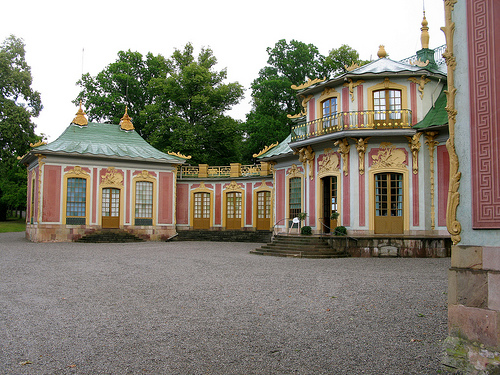
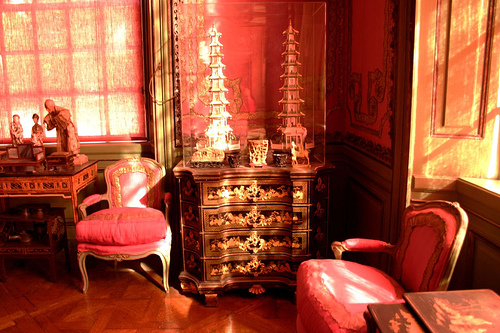
Unfortunately, photography is not allowed in any of the palaces. This photo was taken from Airchild on Flicker, where she stated she didn’t know about the photography limitations. Lucky for us, we get a small glimpse into what she calls the pink room.
For those who are curious of how it looks inside the Chinese Pavilion (previous picture), here it is. There are different rooms with different colors as themes. This is the pink room. Unfortunately photography is not allowed and I didn’t realize it until a guard came running after and yelling at me. I thought: “Even in the Louvre you can photograph at will, as long as you don’t use the flash or tripod. What’s the big deal here?” Well, so is it with all museums in Sweden, sigh! I was made to look like a thief.



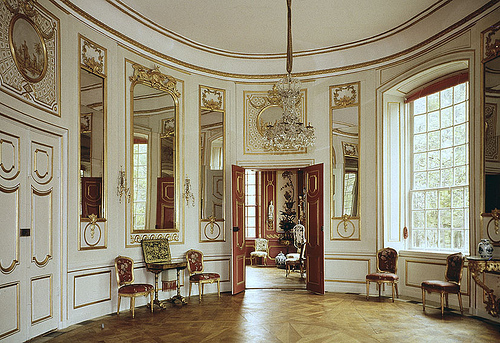
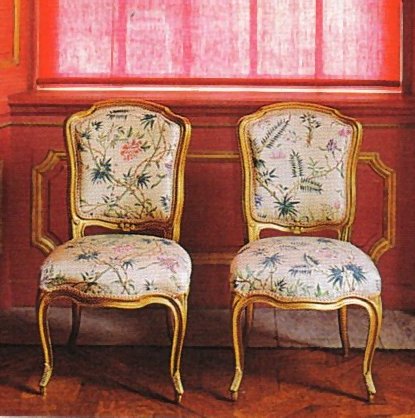
The Peak of Chic Blog posted some marvelous photos, (the best in my opinion) of the Chinese Pavilion which was featured in the May 1996 issue of World of Interiors. The Pavilion was restored to its former glory in the early 1990s, and possibly after the restoration was completed, often times publishers take photos of the completed project for their magazines. In any event, we are so thankful to Peal Of Chic for uploading these photos, as after researching the Drottningholm Palace, virtually NO photos have been taken of the inside of most of all the buildings.
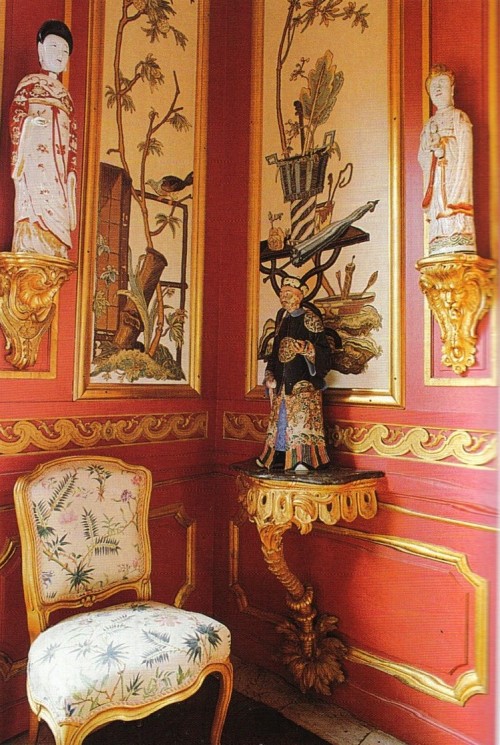
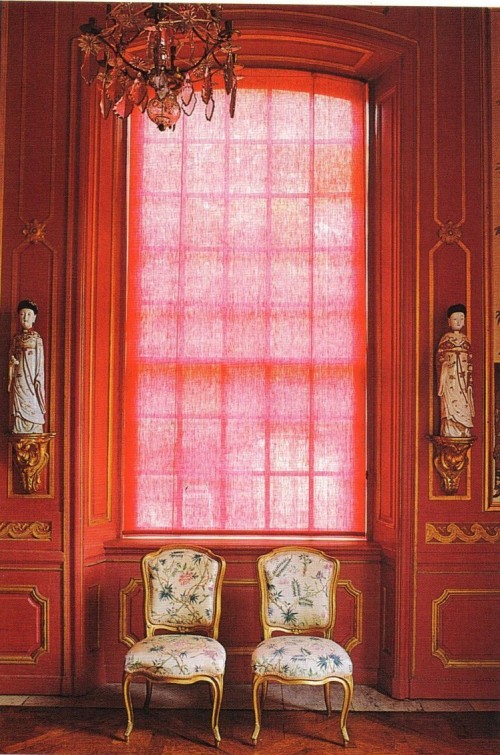
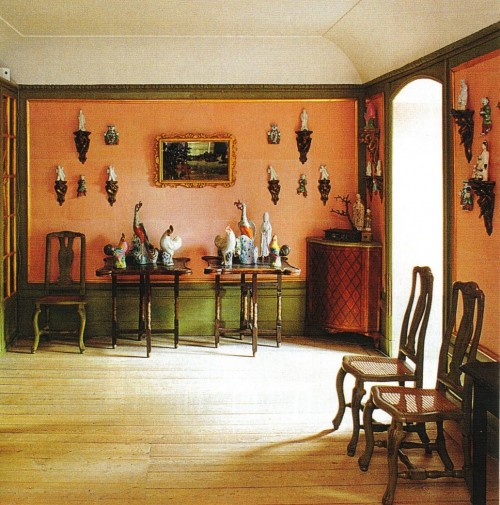



Kevin Sharkey who writes on the Martha Stewart site, featured an extensive review of the book Emmanuelle Gillard and Marc Walter’s Exotic Taste: Orientalist Interiors which reviews some of the architecture at the Chinese Pavilion. This book takes an in depth look at the exquisite art and architecture which include detailed carvings, elaborate textiles, bold colors, and grand architecture dominate the Eastern style of decoration. This hardbound book has 236 pages of rich, colorful photos and retails for $75. The photos show everything from entire rooms to furniture to details.
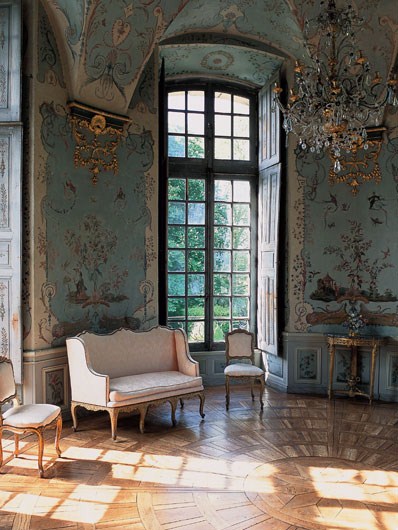
This picture was also featured in the Emmanuelle Gillard and Marc Walter’s Exotic Taste: Orientalist Interiors



